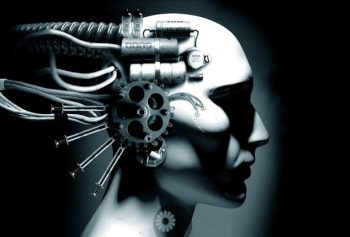Contributing writer for Wake Up World
Horrors and Hopes for the Future – A Shamanic Perspective
Technology is valuable, but must be advanced with great wisdom and caution.
In my recent book, The Mescaline Confession [1], I wrote a chapter about a stark vision I one day received from the Huachuma cactus, warning of a future in which our own technology will devour us. Huachuma, also known as San Pedro, is a sacred cactus native to the Andes which is shamanically used in Peru and has been for thousands of years. Its active ingredient is the alkaloid mescaline, which was made known to the world by Aldous Huxley in his book The Doors of Perception [2].
Technology, the cactus told me, is not our God — it is our servant. Technology itself is a tool that is neither inherently good nor bad, but technology without wisdom is weaponized stupidity. Recently, I stumbled upon a profound essay that echoed these revelations quite closely, Why the Future Doesn’t Need Us [3], published by Bill Joy in Wired magazine way back in April, 2000. Primarily about the potential dangers of giving artificial intelligence (AI), robotics and nanotechnology greater autonomy and control over their given roles, it also critiqued the rabid transhumanist movement, a giddy group, hell-bent on merging our bodies and minds with computer technology in a quest for god-like, never-ending life. What these people fail to realize is that our short time here already can and does lead to immortality of much greater value, that living and dying cannot be easily separated, and that ancient technologies for understanding the absolutely essential nature of life and death have existed for millennia, upon the very ground on which we stand.
Then quite rudimentary, transhumanism has come a long way in 19 years, attracting growing numbers of devotees seeking to “improve humanity” (but really just their own) by embedding and/or replacing their bodies more and more significantly with tech, making us “better” and even — their primary goal — “immortal”. Joy’s piece has only become more relevant as we stampede toward the unknown consequences of bio-technological integration.
An eminent computer scientist and co-founder of Sun Microsystems, where he served as chief scientist for over 20 years, Joy is no Luddite and states this very carefully. Indeed, he has contributed over many years to marked increases in the power of software, but this only gives him a more personal sense of responsibility for the darker turns it might take. While expressing deep concern over the development of modern technologies, he raises important ethical questions which we’d be wise to consider today, similar in theme to those the sacred cactus revealed to me that difficult afternoon in The Sacred Valley.
I was far from this subject until that one Huachuma ceremony four years ago, during which a disturbing, dystopian future was shown to me. I was taken by a vision of the future in which humanity was no longer in charge. It was on the verge of collapse. A species which made it through millions of years of evolution, growing and learning, now faced extinction. It was such a dire, seemingly inescapable fate, that all my being yielded to sadness. What can be done? I was silently asking. What was the solution to a big problem we ourselves are inexorably creating? The answer didn’t come that day, but later I came to understand that the answer was already in my hands, body and spirit.
Like Joy, I am no Luddite, but a line needs to be drawn. Technology is valuable, but must be advanced with great caution. As I wrote in The Mescaline Confession:
“I need my phone because it helps me stay connected to my family. At the same time, it also connects me to The Matrix with all its fear and madness. The lives of billions of people are brewing daily in my pocket. This, I thought, was the dark side of technology, which charms us with convenience, but in fact claims our mind. Convenience, I thought, was the Trojan horse allowing the virus to access our minds at virtually any time, a self-terminating virus meant to simulate life to destroy it.”
While some are looking up to psychics, who shake in epileptic seizures, or listen to gurus in white robes and holy preachers, others simply observe the world with open eyes. It is the same world we see every day going to work, but seeing it through a trance-like state which is maintained by certain cultural forces, thus preventing us from seeing naked reality.
John Carpenter demonstrated this in his movie They Live [4], which he wrote and directed in 1988. Ostensibly a science fiction/horror film, it shows a reality in which the ruling class are an alien species, concealing their appearance under human form. Their true, hideous faces and ruthless manipulation of human society could only be revealed through special sunglasses, devised by an underground resistance. These fresh eyes also exposed subliminal messages embedded in the cultural landscape, demanding that we OBEY, CONSUME and CONFORM.
Leaving the notion of aliens to sci-fi, we do truly live beneath such a deceptive veil. The cultural hypnosis remains rather vivid to those wearing the actual “sunglasses” readily available to all — plant medicine. Besides the growing mechanisms of societal control, as in George Orwell’s 1984 [5] and Aldous Huxley’s Brave New World [6], there is another theme which becomes apparent the moment you put on the sanity lenses. You begin to see the rise of mental illness and the legitimization of insanity. Political correctness used as a tool for coercion is often applied to this task. People are used as pawns in social experiments, unwittingly herded together as a doped, human shield against sanity. Psychology misused can become a psychological bio weapon, targeting people from within to turn them against themselves and others. This zombification is happening on a grand scale right now, but the tools with which to do it are becoming more powerful. The forces behind this are a whole other question, but the fact that our modern world is nurturing madness with increasing precision is obvious and beyond all argument.
The transhumanist agenda’s hysterical craving for eternal life is more likely an insane drive toward what, I believe, will be a human-free future in which cold calculation will rule the world, pushing true humanity to extinction. Perhaps it is nothing more than the same old fear of death. The idea of uploading human consciousness into a computer in search of immortality is a digital analogue of the religious belief in a heavenly afterlife. The only difference: their version of Heaven is virtual.
The lure of immortality has entranced humanity for thousands of years, but we have always possessed countless ways to attain it. Many have in fact achieved immortality throughout human history; Classic Greek philosophers, the builders of ancient Egypt, the musicians and writers of medieval ages in Europe and many others have acquired it by making a lasting dent in human history, influencing the way we live and think today. They have become immortals in our minds and culture. On what seems a smaller scale, but I think no less significant, your parents are made immortal by bringing you into this world. Today, however, with advances in science and technology, immortality has taken on new meaning. Taken literally, the pursuit for everlasting individual life is now running full steam in Silicon Valley, bringing my frightening vision closer to a reality.
The transhuman desire to extend the body and mind with technology is actually a desperate attempt to compensate for a sense of incompleteness that will never be fulfilling. The incompleteness that they feel is illusory and can only be overcome through self-realization.
Transhumanism wouldn’t be a big concern if prominent tech people such as the figurehead of the movement, Ray Kurzweil, were not involved. Obsessed with transhumanism, Kurzweil is a leading voice in futurism and development, having invented the digital scanner and made many accurate predictions about the course of computer tech. He currently runs Google’s machine learning program. In his article, Bill Joy recounts an interaction with Ray in a hotel bar, where the latter gave him a partial pre-print of his then forthcoming book, The Age of Spiritual Machines [7]. It outlined a utopia he foresaw – one in which humans gained near immortality by becoming one with robotic technology. Reading it, his sense of unease only intensified; he felt that he understood the negative potential of this “utopia”, understanding the probability of a bad outcome along this path.
It seems unlikely, for example, that transhumanists have given much thought as to what life would be without death. In my first book, Path: Seeking Truth in a World of Lies [8], I recounted my near-death experience in Mexico in 2008, during a peyote ceremony. Numerous deadly scorpion stings on my thighs took me very close to the precipice between life and death during the three hellish days that followed. I believed that I was dying during much of this time, giving me a deep insight into the vital, inextricable relevance that our inevitable death has to life. Death, I learned, is my friend: the overarching motivator to truly live. Without death, I realized, we wouldn’t seek to achieve the things that we do with the urgency that our brief existence in this world demands. Life’s vibrancy is in fact dependent on its inescapable demise. Death makes us human.
The delusion of digital utopia provided by AI has raised concerns in many people, among them the firebrand technologist, Elon Mask, but his solution may lead to deeper problems. In a recent appearance on the Joe Rogan Experience, when asked about the danger of AI, Musk responded that he’d warned influential people, including then US president Barack Obama, of the dangers inherent in advancing the technology — that it’s the genie in the bottle. His warning sadly fell on deaf ears. This, he indicated, partly inspired the creation of his new company, Neuralink Neurotechnology, in order to develop an implantable brain – computer interface. Through symbiosis with artificial intelligence Musk believes we might withstand the existential threat to humanity posed by unchecked AI, enabling us to compete — or at least keep up — with our mysterious new silicon children. Musk believes that the merging of humans and machines is inevitable, saying that if we cannot stop it, we should join it. Joy asks in his article, “Given the incredible power of these new technologies, shouldn’t we be asking how we can best coexist with them?’’ Musk’s answer is to become, at least somewhat, more like them.
But can this “can’t beat ‘em, join ‘em” approach have a dark side? While Musk’s Neuralink is apparently purely motivated and no doubt has positive applications, the potentials for its abuse are vast and terrifying. With it, we are fast approaching a time where we will be able to order, for example, a pizza, by mere thought. Since Neuralink and its like will almost certainly come to know our sub-conscious better than we think we can, it will soon be able to present us with a pizza delivery we didn’t even know we wanted! It will literally read our minds at depths of which we are rarely conscious, “Well, what do you know! I was hungry!”
Just as the inventors of the wheel did not conceive of them rolling under the tanks that crushed life in Tiananmen Square, there are surely dire consequences that will stem from the optimistic invention of Neuralink and AI. Consequences of which we cannot presently conceive. Those that we can conceive of are bad enough! For example, as I write, people’s expressed thoughts can and are being used against them, destroying their lives. A half-dazed, midnight tweet can ruin you. And here we are, fast approaching a time when all of our most private contemplations, conscious or not, will be available to the elites as weapons to be used against us. We are what we do, of course, not what we think. We have broad imaginations, but are blessed with the moral ability to choose the ethical course of action.
Think about that, honestly… As morally upright a human being as you may be, have you not had thoughts that, if exposed, might have ruined your relationships or social standing? Wishing your neighbour ill, for example. Many if not all of you have thought such “evil” things, some time, under certain circumstances. How many more such dark ideas might you be suppressing beneath your consciousness? As it advances, Neuralink mach 2, 3 or 8 will learn to see them, regardless. It would be foolish to think we could keep our neuralink just between us and our PC. Even now, your phone transmits all manner of information, from your very location to your favorite color to your heart rate. Perhaps as soon as 2024, five years from now, our least compassionate “superiors” will possess a more powerful tool to find and prosecute “thought crime” than Orwell dared to imagine in his 1984.
This rather depressing sentiment made me think of another strategy: What if we humans form a resistance and collectively reject the notion itself? I myself have no desire whatsoever to install any kind of silicone implant in my body in order to function “better” and compete with my calculator. This is why I have the calculator, so it can do the calculation for me. Most certainly I don’t want to become it. Rather, I prefer to spend time in nature and use sacred plants which are the best link we have to an organic life on Earth. The more I do it, the less I want to become a cyborg. This is the technology that guides me toward my highest potential. From the shamanic perspective, transhumanism appears to be a kind of cosmic virus which ironically promises life extension, but in fact threatens human life as we know it.
Thankfully, the earth has provided us with plant medicines which are the perfect antidote to the cosmic virus. Human power structures, however, particularly in Western society, have made these psychoactive agents of our species’ immune system illegal! They banned the cure! Springing freely from the soil, plant medicines are the antibodies we need to combat spiritual disease. With plant medicines we can embrace seemingly ephemeral, human life as it is. They can easily help us to understand clearly the error of the transhumanist course and steer away from it, avoiding the surrender of too much decision-making to heartless, glorified calculators in the name of our precious, temporary convenience. They teach us that it is mere egomania to attempt to literally live forever.
The more of us that experience the loving awareness provided by the whole plant Huachuma, the solution that I have found, the stronger our collective sanity becomes. MAPS, the Multidisciplinary Association for Psychedelic Studies, and other organizations like it, are growing in size, respectability and influence. After countless years of spiritual human-plant connection — briefly paused by the rise of a relatively recent, consumerist machine — the plants are finally making their way back to the main stage. We can only spread the word and hope that they reach enough people before we spiral ever deeper into mechanistic notions of “improved” existence. I believe we may yet be shown the light before we are destroyed by our ever-increasing concessions to convenience. There is nothing convenient about the end of our beautiful species. We’re fine just the way we are. We only need to realize it. The technology to do so is, and always has been, close at hand.
References:
[1] The Mescaline Confession: Breaking Through the Walls of Delusion, Sergey Baranov, 2018
[2] The Doors of Perception: Heaven and Hell, Aldous Huxley, 1952
[3] Why the Future Doesn’t Need Us, Bill Joy, Wired, 2000
[4] They Live, John Carpenter, 1988
[5] 1984, George Orwell, 1949
[6] Brave New World, Aldous Huxley, 1932
[7] The Age of Spiritual Machines: When Computers Exceed Human Intelligence, Ray Kurzweil, 1999
[8] PATH: Seeking Truth in a World of Lies, Sergey Baranov, 2013
About the author:
Sergey Baranov is the founder of Huachuma Wasi, a healing center in The Sacred Valley of the Incas, Peru. He is the author of Path: Seeking Truth In a World of Lies, The Mescaline Confession: Breaking Through the Walls of Delusion and Write Your Zen in 30 Days. Sergey’s passion for life on Earth and its preservation is the driving force behind his work.
You can contact Sergey at www.shamansworld.org.

If you've found value in our articles, we invite you to support the release of our brand-new book, "Gratitude Practices for Kids: A Practical Guide for Adults to Instill a Spirit of Appreciation and Positivity in the Next Generation."
"Gratitude Practices for Kids" brings together over 25 innovative and accessible practices designed to enhance gratitude in everyday life. This comprehensive guide is backed by 17 scientific studies, ensuring each concept is grounded in research, underscoring our commitment to nurturing growth, emotional intelligence, and positive interactions between adults and children.
We encourage you to opt for the paperback version to celebrate this new release. Dive into its fresh pages away from digital distractions, allowing you to immerse yourself in the transformative practices it offers.
Over recent years, Wake Up World has faced significant online censorship, which has impacted our financial ability to operate. Moving into book publishing represents a strategic step to secure the ongoing funds needed to continue our mission. By purchasing Gratitude for Kids, you help us keep our content free and accessible to everyone, avoiding needing a paywall. With over 8,500 articles published in the last 13 years, we remain dedicated to keeping our valuable content open to all.









